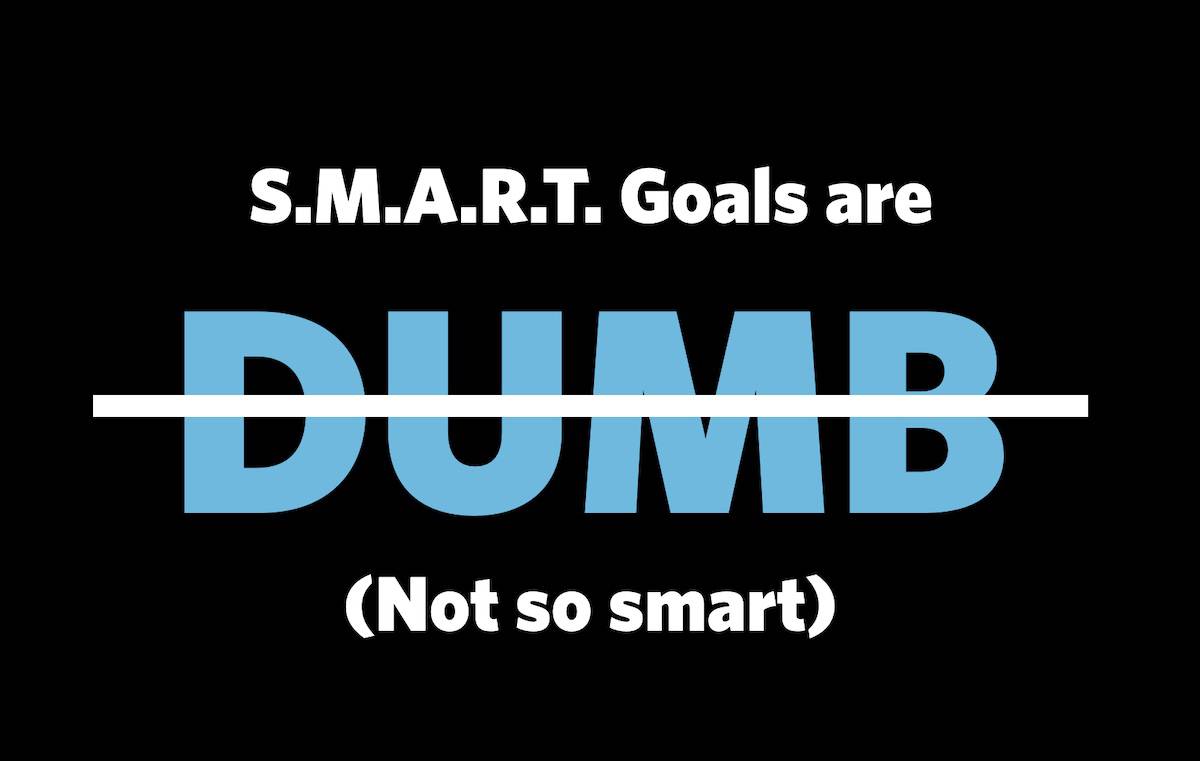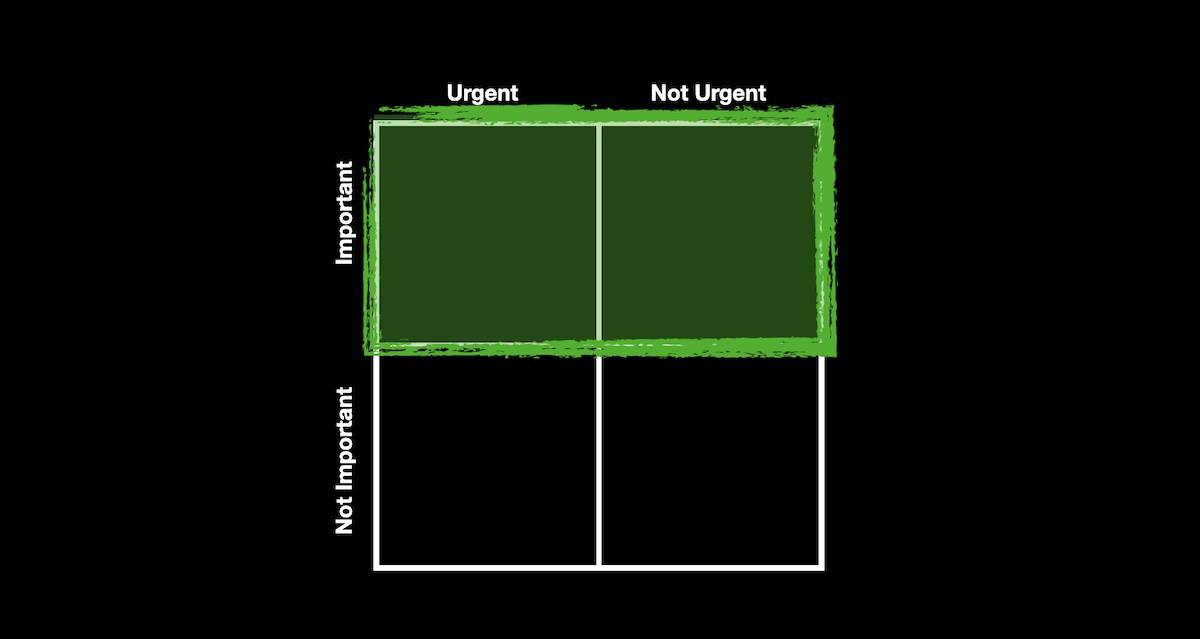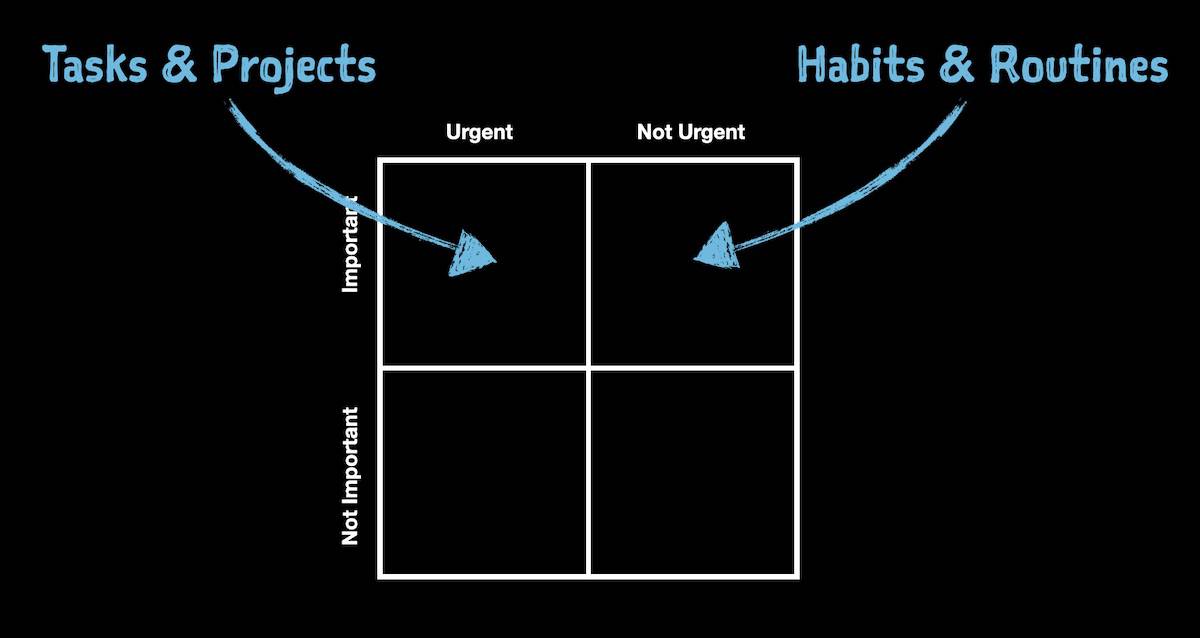Habits vs. Tasks
We all want to get things done. We all wish we could be just a little more productive. Our specific reasons may vary, but we are all motivated to solve a common problem:
We never seem to have enough time for the things that are truly important.
Today we’re going to look at two very different ways to get things done. This isn’t a very technical article, but speaks directly to the way we approach our life and work in our attempt to be more productive and creative.
The Traditional Way to Get Things Done: Goals
We have all heard some version of the advice that “if you want to be successful, you need to set a goal.” This is the traditional way to creating better outcomes: set a goal, then work hard to achieve it.
When setting a goal, the traditional advice is to set a S.M.A.R.T. goal — an acronym that can help you more clearly define your goals and make them more likely to be achieved:
- Specific
- Measurable
- Achievable
- Relevant
- Time-based
Goals are typically associated with projects. They are things to get done. Their primary purpose is to be completed so you can clear the decks for something else.
Lesson: SMART Goals are Dumb

(The following is a short personal story about how I learned the hard truth about the shortcomings of goals. If you prefer to skip ahead to the big takeaway, click here.)
A few years ago, I decided to run a half marathon. For reference, I’ve always been in pretty good shape — I played college tennis and went to the gym nearly every day — but I hated running. I loved pretty much any sport played with a ball, but running was boring.
So when I was challenged by a friend to run a half marathon with him, I viewed it as the ultimate test of mind over matter for me. If I could successfully train for and run a half marathon (13.1 miles), I could do just about anything.
So I signed up for the Door County Half Marathon on May 6, 2017.
In other words, I set a SMART goal:
- Specific: I would run in and complete the Door County Half Marathon.
- Measurable: I would either cross the finish line or I wouldn’t.
- Achievable: I had over a year to train, and I was in decent shape already.
- Relevant: It was an interesting challenge for me, and I had accountability because my friend was running it with me.
- Time-based: The race was happening on May 6, 2017. I had to run it on that day.
I trained for over a year, and even ran a couple of times per week on the treadmill in the winter to keep my distance up. Once I felt comfortable with the distance, I continued to work on my speed. With a couple of weeks to go before the race, I was feeling great.
Then one beautiful spring day, I decided to take advantage of the weather and squeeze in one more run. I didn’t go particularly far, and I didn’t go particularly fast.
When I got back though, I could tell something was wrong.
My knee felt a little weird. It didn’t hurt too bad though, so I didn’t think much of it and decided I’d just take it easy the rest of the week before the big race.
But nothing was going to keep me from running that race.
The big day came, and I did finish the race. But by the time I was done, I was in a lot of pain. I was able to push through it and achieve my goal, but I distinctly remember that moment when I crossed the finish line and I thought to myself:
What now?
I had achieved my goal and done everything I had set out to do, but I wasn’t 20 feet from the finish line and immediately felt empty. The obvious next thing would have been to sign up for another race. But I knew my knee was messed up (my patella tendon had slipped off of my kneecap and was on the side of my left leg), so that wasn’t an option.
The moral of this story is best encapsulated by author Shawn Achor:
If your happiness is tied to a goal, you’ll never be happy.
Fortunately, in the months of rehab that I had in front of me, I learned a new approach that allowed me to enjoy the journey.
Use habits to your advantage
The Simple Habits video course can help.
Discover how to make simple changes, starting today, that will make your daily life better. Watch the whole course in the time it takes for a long lunch break.
A Better Way: Habits
Not being able to run for almost 2 months was tough, but I was fortunate — my injury didn’t require surgery. It was actually a fairly common injury I found out for new runners, as they get fixated on the goal of running a race and don’t do much to cross-train. With some biking and daily stretching exercises, I could avoid surgery.
By the time my physical therapy was done, I couldn’t wait to get back to running. But I tried to get back to doing long runs too fast, and developed plantar fasciitis. Which meant that I had to completely stop for another couple of months.
So when I could finally start running again, I completely chucked any sort of goals. I wasn’t trying to run a certain distance, I wasn’t trying to match a certain speed — I just relished being able to go for a run.
Over time, I discovered that the act of running became a sort of mindfulness meditation for me. It helped me to recenter myself and to stay calm. Many of my best ideas come while I’m out for a run.
And I realized none of these benefits were tied to a goal.
I was no longer focused on the outcome. I had embraced a new identity. I was no longer someone with a goal of running a race — I was now a runner. I enjoyed running simply for the sake of running.
Fast forward several months, and I ended up running the same half marathon race exactly one year later. Not only did I finish, I actually ran it several minutes faster than I did the year before. And this time, I felt completely different when I crossed that finish line.
I learned that when you disconnect from the outcome, you find joy in the journey.
The Big Difference Between Habits and Goals
If you really want to improve the quality of your life and design the life you want to live, the way to do it is through behavior change. And if you really want to change your behavior, the way to do it is by establishing good habits (and breaking bad ones).
But the truth is that you’ll need both. Habits are great for personal behavior change and becoming the person you want to be, but when it comes to the world of work you will never be able to escape projects and goals. So it’s worth understanding a few important differences between them.
Goals are tied to outcomes. They are projects to be completed, supported by tasks, that typically have a specific due date that they will be finished by.
Habits, on the other hand, are tied to areas of responsibility. They are ongoing and are associated with a standard you wish to maintain in a specific part of your life.
And because goals and habits are so different, *we recommend you track them in different places.**
Use habits to your advantage
The Simple Habits video course can help.
Discover how to make simple changes, starting today, that will make your daily life better. Watch the whole course in the time it takes for a long lunch break.
Use a Task Manager AND a Habit Tracker
There are lots of great options when it comes to both task managers and habit trackers. Let’s consider task managers first.
It seems a new task manager arrives just about every day. Our favorite is Things, but there’s a long list of great options depending on your personal preferences:
- OmniFocus
- Todoist
- TickTick
- 2Do
- Trello
- etc.
Each one will have a slightly different approach, but the goal is the same: help you sort through all of the tasks you could do and surfacing just the relevant ones. This is extremely useful when trying to decide what to do and when to do it as you plan your day.
But that’s also the problem with using a task manager for driving effective behavioral change: it is essentially a long list of things you are ultimately going to decide NOT to do (at least right now).
This means that when you consider each task in your task manager when deciding what to work on today, it is simply a list of suggestions. Your task list is merely a list of options. There’s no way you’ll do them all, so you say “no” to many more than you say “yes” to.
But habits are different. They are non-negotiable. Instead of a list of things you might do, your habits are things you must do. They are essential.
Therefore, we recommend you keep them separated from your tasks and projects. If you keep them together, there’s a good chance your habits will lose their meaning and you’ll start to view them the way you do the rest of your tasks — as optional activities you may or may not take action on.
The value of habits is not found in the completion of one action, but in the compounded benefit as we repeat that action regularly. If you miss a habit, you don’t feel it immediately. But if you want to really move the needle over time, consistency is the way to do it.
Important vs. Urgent
Consistently taking action on the right things requires that you think about why you want to do something in the first place. When you start to ask why, two primary motivations appear:
- Something is urgent (it must be done soon).
- Something is important (it must be done, period).
The problem is that these things seldom overlap.
“What is important is seldom urgent, and what is urgent is seldom important.” – Dwight Eisenhower
Using this, we can classify everything we could possibly do into four different categories:
- Things that are Important AND Urgent
- Things that are Important but not Urgent
- Things that are Urgent but not Important
- Things that are neither Important nor Urgent
Unfortunately, urgency speaks louder than importance. This makes it easy to slip into a habit of living a reactionary lifestyle, which we call living by default.

It is possible to flip this, though. By asking yourself “why,” you allow yourself the opportunity to weigh things and prioritize the things that are important but not urgent. We call this living by design.

Living by design actually fits very well with using separate systems for your tasks and habits as well:

Your task manager can help you identify the things that are both important (should be prioritized) and urgent (telling you the moment when they should be done now). And your habit tracker (we recommend Streaks) can help you maintain consistency for the things that are important but not urgent.
The trick to making this work is to curate the tasks that you allow into your task manager. If something isn’t important anymore, remove it. Don’t clutter up your task manager with unimportant things that require action based on their urgency.
Yes, it requires a little more thought and effort, but it’s a worthwhile investment. Learn to live by design, not by default. Be intentional about shaping your future with both your habits and your tasks. Tomorrow is being constructed by the decisions you make today.
Is your productivity busted?
If you feel like you could use a tuneup for how you manage your tasks and your time, get access to our Productivity Workshop.
Shawn Blanc (founder of The Sweet Setup) covers:
1. The four most common symptoms of a busted productivity workflow
2. What you can do to overcome them
3. How to improve your approach to managing and organizing your tasks.
You’ll also get the downloadable templates and cheatsheets.
